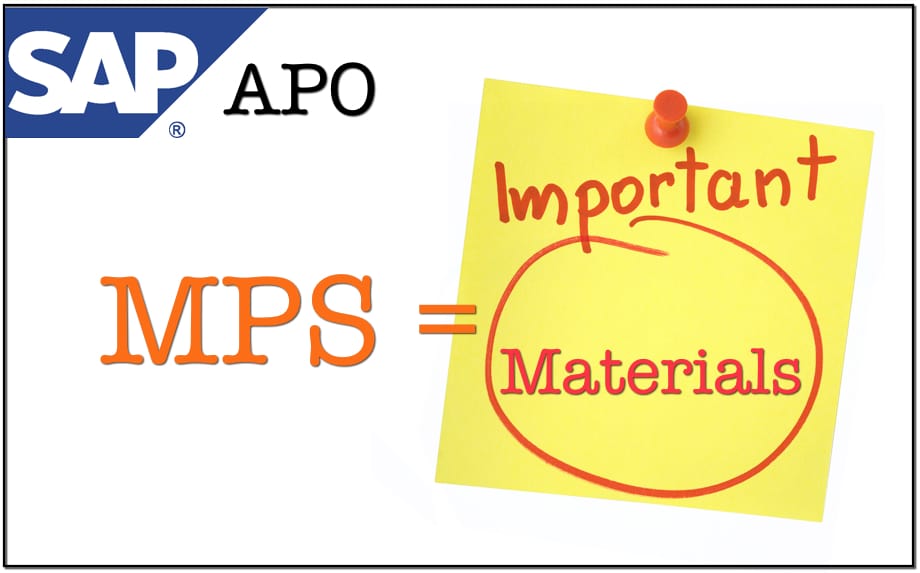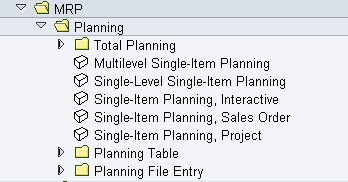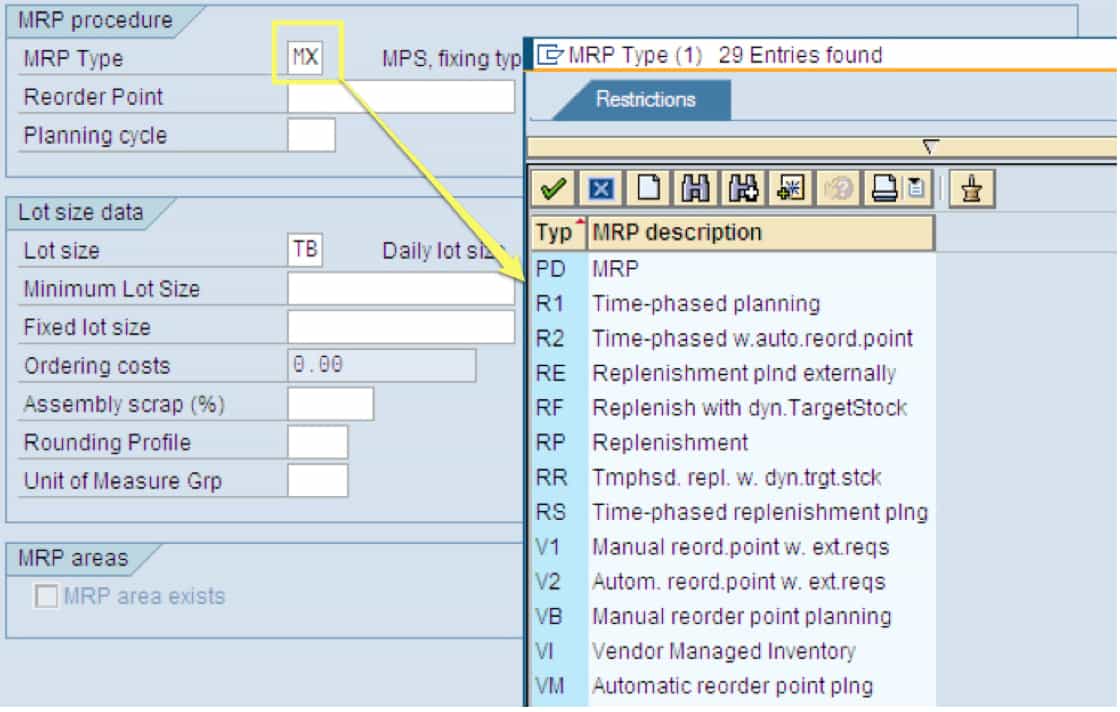Why MPS is Misnamed in SAP ERP and APO
Executive Summary
- MPS or the master production schedule has been misnamed in both SAP ERP and APO.
- MPS is shown as different from MRP.

Introduction to the MPS
The MPS is one of the most confusing planning runs because it has changed so much over time. You will learn how the MPS is used currently and how it has been used historically and whether it is still necessary in the modern era.
Our References for This Article
If you want to see our references for this article and other related Brightwork articles, see this link.
Notice of Lack of Financial Bias: We have no financial ties to SAP or any other entity mentioned in this article.
How the MPS is Used
On several occasions, I hear the MRP run, the initial supply planning run, or the network supply planning run referred to as the MPS (Master Production Schedule). Upon inquiring, I often learn that the MPS is run for all products or a single product. I have had several discussions with different people where I state that the MPS is not synonymous with the MRP run or any other terms I have used above.
They can be, but they are not necessarily the same.
How The Term MPS is Used
MPS is used indiscriminately. If the company is planning all products in ERP with MRP, they call that an MPS. Which, in fact, it isn’t. I find most companies misusing the term. Secondly, even the official definition of MPS seems to have changed over time. If the main point is to describe the non-DRP/Deployment supply plan procedure, I think the network or initial supply plan is better and actually much more accurate.
These two terms do not change depending upon how many products (all or just the critical) are included in the planning run, and for that reason, it works better. It also works better in that it is more descriptive of what is actually occurring.
The Master Production Schedule in SAP ERP
SAP’s use of the MRP terminology has not been helpful, and I think has led to more confusion on this topic. For instance, SAP places MRP functionality below a folder called “MPS.”
These are the same options, with slightly adjusted naming, found under the MRP folder under normal production and process production.
This is very common in SAP for the same functionality to be located in multiple places. Multilevel means exploding the BOM from top to bottom, while Single-Level means only planning at the level of product entered into the system.
MPS as Different From MRP in SAP?
If MPS were actually different from MRP, there would be some important differences. Notice the SAP statements below from SAP Help.
“In the MPS menu there is a separate single-level planning run, which can be executed as single-item planning or total planning. This planning run only includes the master schedule items. Dependent requirements are created for the BOM level directly below the planning level. Levels below this, however, are not planned. This means that the MRP controller can authorize any changes to the master plan before they affect the various BOM levels.” – SAP Help
That makes sense and meets the definition of an MPS. However, this is not reinforced by the menu items below. If what is documented in SAP Help is true, we would expect to find only “Single-Level Planning” under MPS and not under MRP. However, we don’t find that in the SAP menu. Instead, we find Single-Level Planning under both MRP and MPS. Why did SAP set this up in such a confusing manner?
Clearly, a user of the system could begin running this set of transactions and naturally begin to assume that they are running “MPS,” as SAP says they are.
Other Locations Where MPS or MRP are Indicated
The Material Master (product location combination) is coded with an MRP Type. However, this is another problem area terminologically because most methods have nothing to do with MRP. I would have preferred naming the field the “planning method.” This should be obvious as to why. For instance, Time-phased planning and Manual reorder point planning, two of the MRP Types listed below, are not “types of MRP.” They are planning methods. Therefore calling the field MRP Type makes little sense. The frequent misnaming of SAP fields by people for which I can only suppose that English was a second language continues to cause large problems on SAP projects. I can think of no other supply chain vendor that continually misnames its fields in this way.
Ten MRP Types
Ten MRP types are dedicated to both MRP and Master Production Schedule. The four MPS are listed below in orange, and the 6 MRP are listed in blue.
- M0 MPS, fixing type -0-
- M1 MPS, fixing type -1-
- M2 MPS, fixing type -2-
- M3 MPS, fixing type -3-
- M4 MPS, fixing type -4-
- ND No planning
- P1 MRP, fixing type -1-
- P2 MRP, fixing type -2-
- P3 MRP, fixing type -3-
- P4 MRP, fixing type -4-
- PD MRP
- R1 Time-phased planning
- R2 Time-phased w.auto.reord.point
- RE Replenishment plnd externally
- RF Replenish with dyn.TargetStock
- RP Replenishment
- RR Tmphsd. repl. w. dyn.trgt.stck
- RS Time-phased replenishment plng
- V1 Manual reord.point w. ext.reqs
- V2 Autom. reord.point w. ext.reqs
- VB Manual reorder point planning
- VI Vendor Managed Inventory
- VM Automatic reorder point plng
- VS Seasonal MRP
- VV Forecast-based planning
- X0 W/O MRP, with BOM Explosion
The one above which is in red says “MRP,” but of course, it is without MRP. X0 does not perform MRP but does perform BOM Explosion. XO is the most common.
Why Perform an MPS for Advanced Planning?
The question might naturally arise as to why an MPS is necessary when using an advanced planning system and when the differentiation between critical and non-critical materials is already made — with critical materials planned by APO and non-critical materials planned by MRP. The answer is, it isn’t. When an APS system is in the solution design, the MPS process moves to the APS system. However, APS systems have far more flexibility with regards to how they can produce the MPS. Most prominently, APS systems can constrain the MPS so that the MPS becomes feasible. When this is done (a big if, because few companies can keep constrained resources updated properly), one can do the MPS without capacity leveling. Capacity leveling is only necessary when the plan is not using constrained resources. SAP SNP has the ability to constrain supply resources (like warehouse equipment), and PP/DS has the ability to constrain production resources. However, constraining the supply planning process is much less common than constraining the production process because supply chains tend to be much more limited by material than resources.
Therefore, when MPS is performed in SAP ERP, this means, in the majority of cases, that there is no APS in the solution design.
MPS in APO
Thus while the MPS output is typically from a separately scheduled run in SAP ERP, when SCM is in the mix, the MPS comes from SCM. The critical materials are then exploded in MRP in the normal MRP run. However, an extract is taken from SCM that is MPS.
Conclusion
A good starting place in building the understanding of something is to call things by the correct terminology. One could explain MRP and MPS’s overall functionality better in SAP. Terminology inaccuracy is a major problem in supply chain planning because few people have undergraduate degrees or graduate degrees in these topics and tend to learn on the job or books. I am afraid that the way SAP has named what is really just MRP functionality in at least one of the folder trees in SAP ERP only serves to increase confusion regarding the term MPS.
In fact, there is a good argument that enhancements in computer hardware have reduced or even eliminated the need to have a separate MPS run. This perspective is described in this article.


